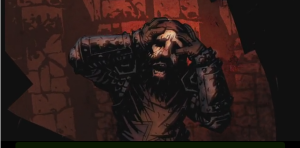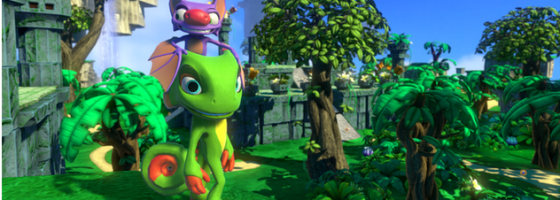Kickstarters and the very definition of an Indie studio have certainty changed over the years. Both started as small scale; where you would have a studio of sometimes less than 10 people asking for a very modest number that would be key to get them going or finish a project. Today, we’re seeing a lot of major names go to kickstarter with huge projects such as Bloodstained and Yooka-Laylee getting huge amounts of money with very modest goals.
However, these companies are on the bigger side and the money they’re asking for is not really about covering the cost of development, but convincing investors to give them money. The problem with this was raised recently and it presents an interesting situation.
Funding Game Development:
Game development is a mysterious art for a lot of people. Despite the amount of transparency thanks to the Indie market, a lot of what goes into making a game is still left in the dark. Funding a game is especially true as many game companies don’t reveal how much it cost to develop their titles with exception to the major AAA games like Grand Theft Auto.
As mentioned further up, what’s considered an “Indie Studio” can mean a variety of situations. Some developers will work on a game while doing other jobs to support the bills, other times the funding is used entirely for paying everyone without needing extra support and so on. The point is that no two Indie studios are alike and the same goes for how they spend their money.
When we talk about kickstarters, most smaller Indie companies are banking on the kickstarter to literally fund all aspects of their game and studio. This is where a few thousand dollars can mean the difference between everyone getting paid this month or having to dip into their personal finances.

FTL’s kickstarter goal was simply to get enough money to finish development, but quickly ballooned thanks to the popularity of the concept.
Simply put, game development can be very scary when you don’t have a publisher footing the bill.
This is why kickstarter has been so vital in getting a number of Indie studios off the ground and games made as these studios don’t have the backing to produce something otherwise.
But we’re seeing a case for larger studios that are still defined as Indie, trying to use kickstarter and this presents another situation.
Multiple Funding Sources:
Over the last few years since the Doublefine Kickstarter, we have seen other developers move into the Indie space and set up Kickstarters of their own to make the games they want. The difference is that these developers or development houses have notoriety already; such as the Mighty No 9 Kickstarter or Bloodstained mentioned above.
The key point when these developers with clout go to Kickstarter is that they’re not looking for funding for the studio in most cases; they’re looking at Kickstarter as a form of publicizing their product. The Yooka-Laylee kickstarter for example, the developers are getting outside funding from publishers and third parties already to work on the game, the Kickstarter is simply being used to gauge consumer interest; same goes for Bloodstained.

Bloodstained has made well over what it was asking for, but the initial goal seems very low to make a video game without outside funding
What this means is something very important to understand — The amount of funding they’re asking for is not directly related to the development of the game or running the studio.
While yes, proceeds of the kickstarter may be used for developing the game, stretch goals or paying wages, they are already receiving outside money to offset the cost. Yooka-Laylee’s kickstarter for $270,000 is a completely different story compared to the Darkest Dungeon’s kickstarter for $75,000 or even Humanature Studios asking for $450,000.
With Darkest Dungeon for instance, the concept and preliminary designs were already done and the money was to be used to finish what was already started and the same thing was for FTL.
You may be thinking “What’s the big deal if different studios have different funding amounts?” And that’s the problem right there — most people don’t see the issue.
Quality in Pricing:
The problem with studios that turn to kickstarter with third party backing is that it’s presenting an unrealistic image of what it takes to make a game. Gamers are very conscious of pricing between titles and will comment if they feel that game A isn’t worth as much as game B.
With Kickstarter, you have developers who are literally asking for funding to keep themselves financially afloat, being put next to someone who simply wants to see if people are interested in a game that’s already being developed. Remember, a key part of Kickstarter and crowd-funding is the fact that consumers are limited based on how much they are willing to donate. If someone sees a project like Yooka-Laylee and compares it to someone else who is asking for far more with a less visually impressive game, they’re going to think that the latter developers are trying to rip them off.

Redhook asked for a modest amount for the Darkest Dungeon as they already had the basic concept and prototype down. But they were still asking for money that would go directly into keeping the studio going.
Making a video game is very expensive and trying to explain that to the consumer is difficult as all that has been a mystery for so long.
I can tell you this much, if someone says that they can make Grand Theft Auto 5 for less than a million dollars, they are lying or someone else is giving them a lot of money behind the scenes.
This leaves smaller Indie developers in a tough spot; do they ask for what they really need which would be higher? Or ask for a smaller amount to be attractive and competitive in the kickstarter community? For developers who go the latter route, it means that they will have to commit to a project with less money than they needed and can lead to them failing to deliver on their project.
On the other hand, kickstarter is a free platform and as long as the kickstarter is putting out a product or project, then they are free to set whatever pricing they want. But crowd-funding as a whole lives or dies on the perception of all the projects and we haven’t seen the full repercussions of this yet.
Crowd-Funding Concerns:
As I’ve talked with other developers about over the course of the last few years on the podcast, Kickstarter is still relatively young in the eyes of the Game market. What’s going to keep it sustainable for Game development is being able to adjust to the changing market and projects appearing on it.
I do feel that developers need to be more upfront about what the proceeds will be going for and maybe even have a specific category for companies looking to get awareness as opposed to pure development funds. If we’re not careful, developers may end up forcing themselves to ask for less money than they actually need and can lead to a self fulfilling prophecy of failing to make a game and hurt crowd-funding at the same time.


